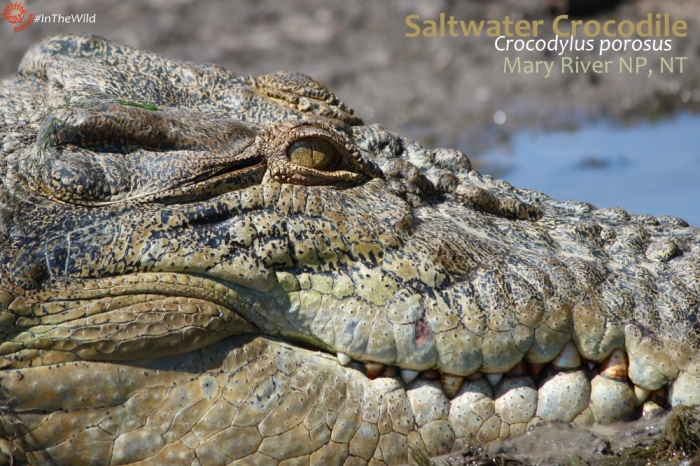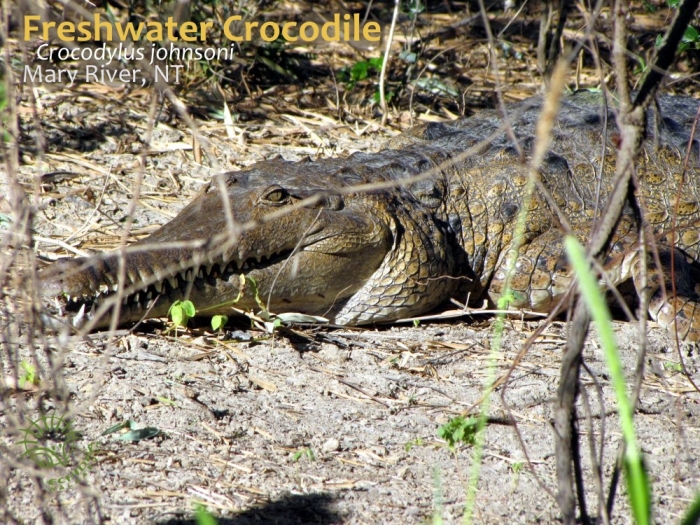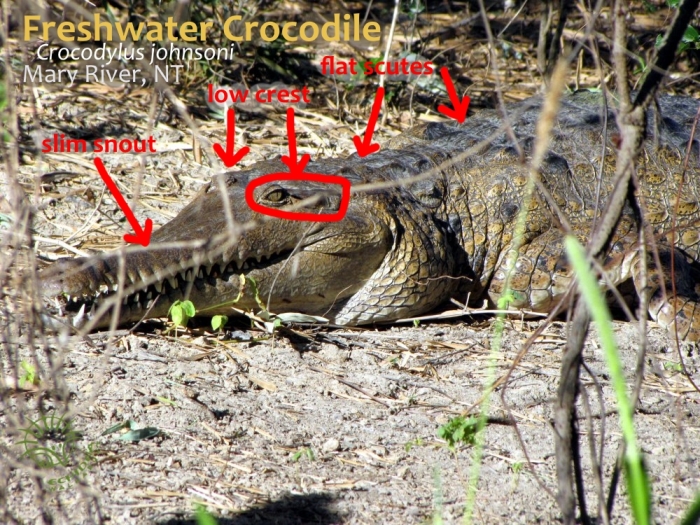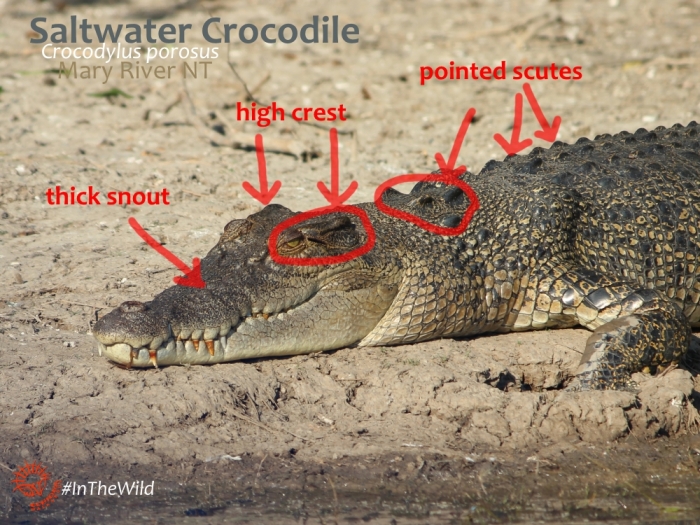Saltwater Crocodiles are the world’s largest reptile. The largest individuals can exceed 7 metres (10metres has even been suggested) and weigh over 1 tonne. They can live over 100 years.

“Salties” live in Australia’s wild Top End (the northern parts of the Northern Territory, Queensland and Western Australia), and throughout south-east Asia. The Mary River in the Northern Territory has the largest density of crocodiles of any waterway in the world.
Read more about the crocodiles of the Mary River here: Crocodiles are beautiful
Australia has another species of crocodile too – the Freshwater Crocodile.

This is how to identify a freshwater crocodile from a saltwater crocodile. You can tell them apart usually from their size (freshies rarely grow as large as salties). But if you see a big one – like this one in the picture below – you’ll see that freshwater crocs have a slimmer snout than saltwater crocs, and behind the eyes there is a triangular growth that is large and pronounced in salties, and low and flat in freshies. Salties have rows of pointed scutes*(2) (osteoderms) on their head and back, freshies have flatter scutes. Compare the two pics below:


Crocodiles are the most intelligent of reptiles, with an extraordinary ability to learn quickly. They are famous for picking up on the habits of their prey: fishermen in Arnhemland are warned not to use the same fishing spot too regularly. They have also been recorded using tools* (1), an attribute shared with primates, dolphins, elephants and crows, and considered one of the signs of high intelligence.
Mother crocodiles tend and guard their nest for the whole time the eggs are growing. She will even splash water over the nest to cool it on hot days. After the eggs hatch and the babies start calling, she breaks open the nest and assists them to disperse by carrying them gently in her mouth. She will even help open eggs that are struggling to hatch.
You can see them on Echidna Walkabout’s 6 day Wild Top End wildlife tour Australia which runs every August.
Read about other wildlife we see on the Wild Top End and Maximum Wildlife tours here.
*1 https://www.livescience.com/41898-alligators-crocodiles-use-tools.html
*2 Scutes: special non-overlapping scale-like structures that clad a crocodile’s body. Scutes have a bony structure. They are shed in small pieces, not as one continuous skin like snakes’ scales.
